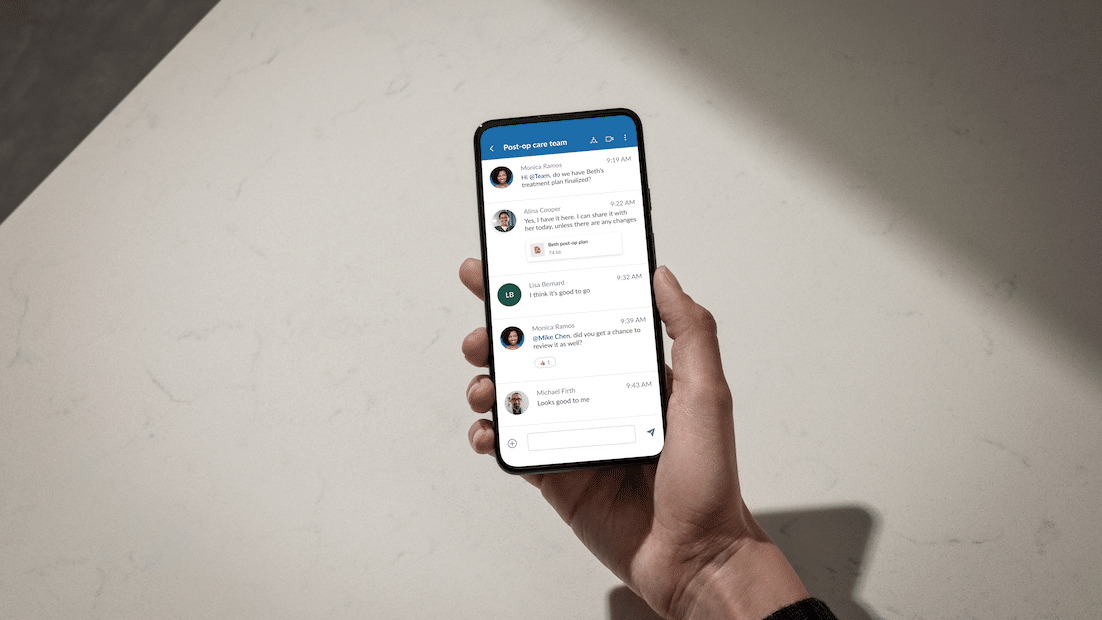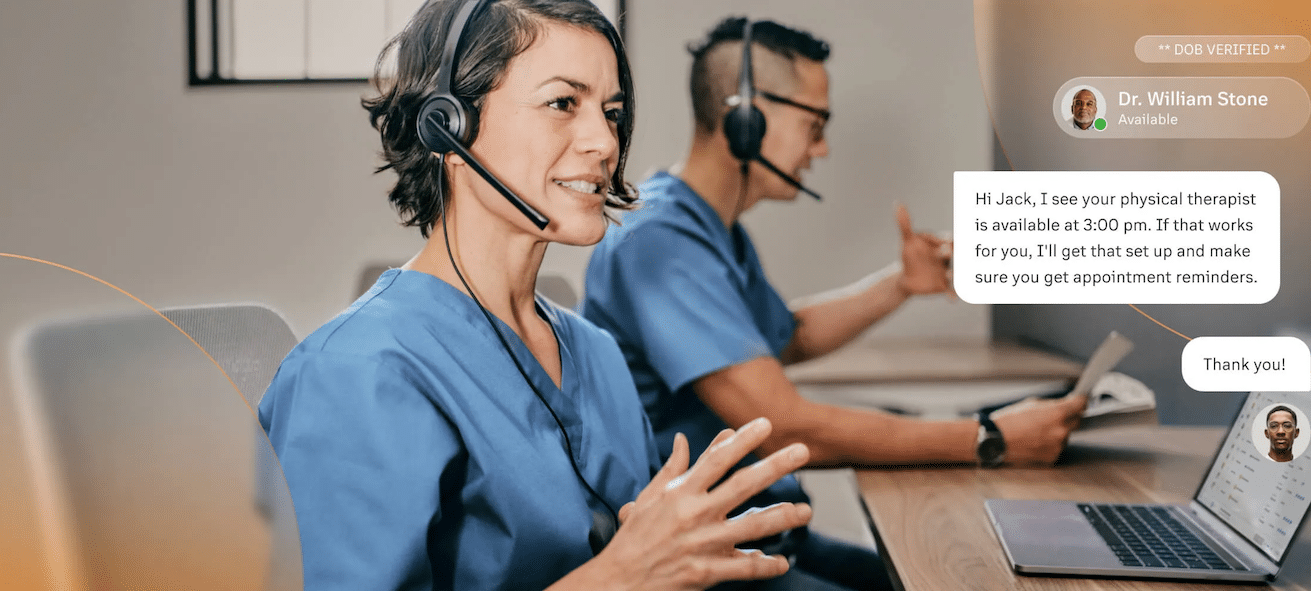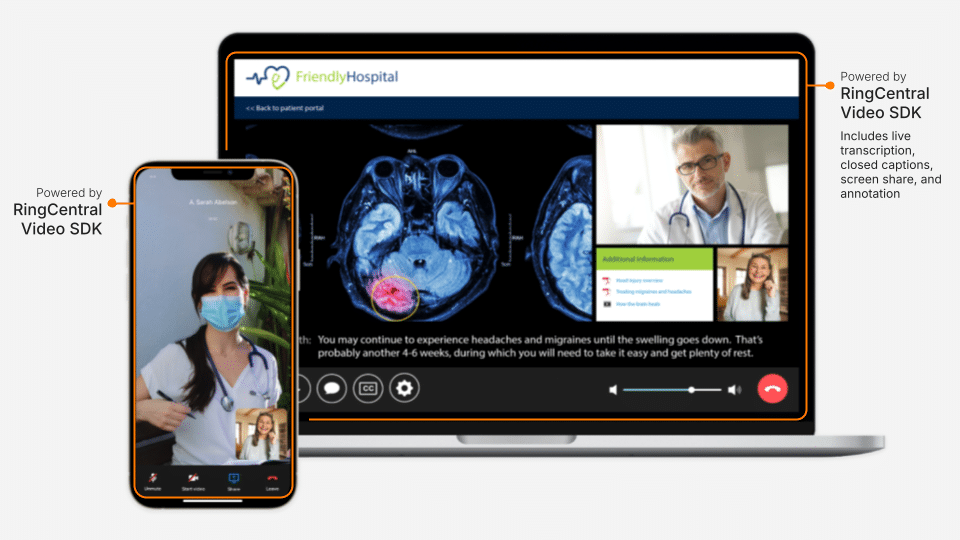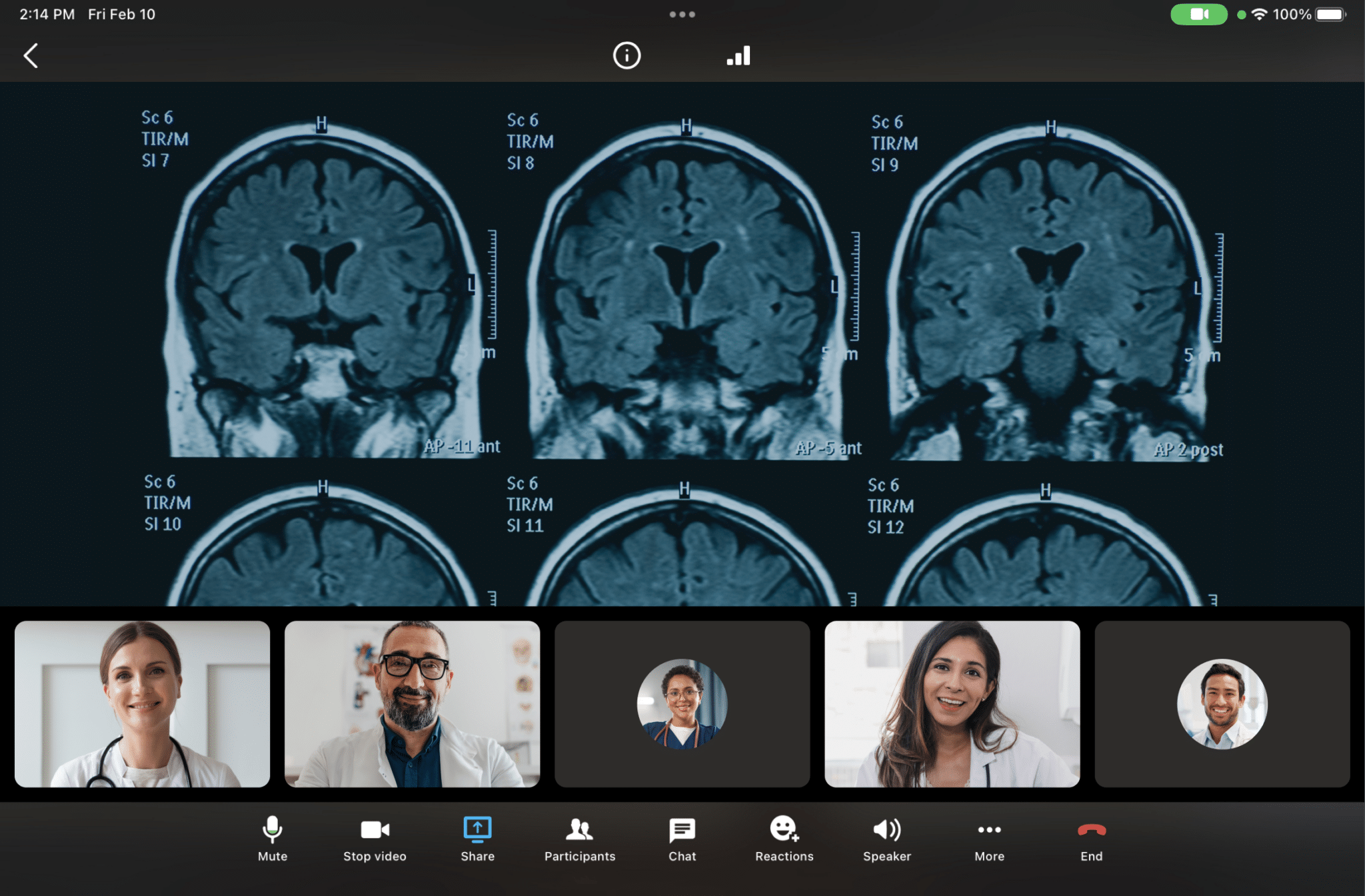The healthcare industry is grappling with a workforce shortage that’s increasingly growing as a concern. In the U.S., a surge in mental health needs is compounding an already demanding situation. And it’s not just in the states, across the pond, the U.K.’s aging population is putting extra pressure on an already stretched workforce. These challenges have healthcare leaders scrambling for creative solutions to address the shortages while maintaining quality care and controlling the ever-rising cost curve.
Consider these daunting forecasts:
-
- The American Hospital Association (AHA) points out that job vacancies in healthcare are skyrocketing, with a projected shortage of 3.2 million workers by 2026.¹
- The U.S. could face a shortage of 37,800 to 124,000 physicians by 2034, according to the Association of American Medical Colleges.2
- And one-third of practicing physicians will reach retirement age over the next decade.2
- By the year 2030, it is expected that 42 out of the 50 states in the United States will likely experience shortages in nursing staff, according to the U.S. Chamber of Commerce.3
Hospitals are feeling the financial pinch too, as labor costs soar and they’re forced to rely more on contract workers.4 McKinsey chimes in, stressing that public health systems need to shake things up when it comes to keeping and developing their workforce. They’re emphasizing the need to support employee well-being and adapt to the changing landscape of healthcare demands.5
The role of cloud communications in addressing workforce shortages
While there’s no magic bullet for the workforce crisis, cloud communications could be a game-changer in easing some of the pressure. By tapping into cloud-based platforms, healthcare institutions can boost their workforce, streamline communication across different locations, and weave in telehealth and video services to cast a wider net.
Here’s how cloud communications can help:
1. Enabling the power of anywhere, anytime healthcare
Cloud-based remote work capabilities directly address workforce shortages by expanding the available talent pool. With telehealth and remote care on the rise, healthcare providers need flexible communication tools that let them work from anywhere.
With RingCentral, keep healthcare professionals connected with their teams and patients, with cloud communications that supports HIPAA compliance – integrating a mission-critical cloud phone system, SMS, messaging, and even digital faxing across mobile and desktop devices. By enabling remote consultations and supporting a hybrid workforce, these tools help healthcare institutions expand their reach without burning out their in-house staff.
For example, organizations like the Centers for Medicare and Medicaid Services (CMS) are actively encouraging at-home care by offering reimbursements for chronic care management and remote patient monitoring and activities such as check-in calls, care coordination messages, and even remote monitoring updates.

2. Knitting a seamless network across multi-site coordination
Healthcare systems are a network of specialized services: hospitals, ambulatory clinics, independent labs, and specialty centers. This spread-out model boosts expertise but complicates coordination. Cloud communications turns scattered sites into a unified system.
They enable quick sharing of lab results, seamless care coordination, and real-time information flow across the network. Healthcare professionals can collaborate effortlessly, regardless of location.
The result? Timely, coordinated patient care throughout the system.

3. Connected experiences across everyone in the care loop
Improved communication reduces burnout and increases retention, crucial factors in combating workforce shortages.
Cloud platforms streamline healthcare communication, offering:
- Multiple channels that support HIPAA compliance–phone, text, faxing, team messaging, video
- Easy telehealth check-ups and specialist consultations
- Appointment reminders
- Built-in walkie talkie capabilities for urgent scenarios (push-to-talk)
- Data driven insights around peak hours and care quality
- Self-service solutions for common inquiries… and more.
Intelligent, connected experiences reduce miscommunication risks, supercharge coordination, seamlessly integrate with existing systems, and skyrocket patient satisfaction—all in one fell swoop.
These platforms synchronize the entire healthcare ecosystem, connecting patients and providers regardless of location or preferred communication method.
4. Addressing EHR inefficiencies to ease workforce strains
Having a communication platform that integrates with your EHR system is going to ease the daily burdens on healthcare professionals.
RingCentral has deep integrations with leading EHR systems like Epic and Cerner streamlining key workflows, automating real-time data flow and reducing manual tasks such as data entry and documentation.
For example, when a patient calls, the system automatically pulls up their EHR details, past interactions, and preferences, enabling healthcare providers to address needs more efficiently. By automating these tasks and streamlining communication, the integration reduces administrative burdens and allows healthcare teams to focus more on patient care, helping to mitigate workforce shortages.
Features like real-time patient engagement and conversation intelligence further enhance care coordination and overall efficiency.

5. Telehealth for expanding physician network and service coverage
Telehealth is vital for reaching patients in rural areas and expanding physician networks to address workforce shortages. Cloud communication platforms enable healthcare systems to tap into a broader pool of specialists, filling coverage gaps without physical relocation.
For example, rural hospitals can now consult with top specialists remotely, and busy clinics can use virtual providers to manage overflow. Video SDK solutions allow institutions to build custom telehealth apps, enhancing care while maintaining seamless communication.
By leveraging telehealth, institutions optimize staff, reduce burnout, and expand care coverage—essential for tackling the healthcare workforce shortage.

“With RingCentral there are no physical limitations. It doesn’t matter how many users we have, where they’re located or how they’re connected.”
Viji Tirup – IT Systems Analyst, Comprehensive Blood & Cancer Center (CBCC)
6. Flexible, scalable training for healthcare’s new reality
The healthcare staffing crunch isn’t just a numbers game – it’s about keeping skills sharp as experienced staff leave. Cloud communication tools offer a practical solution.
A reliable, comprehensive cloud communications platform enables healthcare systems to deliver training efficiently, whether it’s for new residency programs or ongoing skill development. Staff can join video sessions, listen to recorded calls, or chat with mentors in real-time. The flexibility means learning can happen during breaks, between shifts, or whenever it fits.
For healthcare orgs, cloud communications tools do double duty. They’re not just for patient care and team coordination – they’re becoming crucial for building and maintaining a skilled workforce. In a tight labor market, having a tech stack that can multitask like this is a significant advantage.

Teaming up to move forward
The healthcare workforce shortage is a tough nut to crack, but cloud communications give us some powerful tools to tackle it. These technologies aren’t just plugging holes – they’re reshaping healthcare delivery and driving down the cost curve.
Bottom line? Healthcare providers embracing these cloud strategies aren’t just weathering the workforce crunch – they’re positioning themselves to thrive financially and operationally.
To learn more about RingCentral for Healthcare or to schedule a demo, visit our solution page to learn more.

Sources:
1 American Hospital Association. Data Brief: Health Care Workforce Challenges Threaten Hospitals’ Ability to Care for Patients
2American Hospital Association. AHA Senate Statement on Examining Health Care Workforce Shortages: Where Do We Go From Here?”
3 U.S. Chamber of Commerce. Data Deep Dive: A National Nursing Crisis
4 American Hospital Association. Hospital Workforce Shortage Crisis Demands Immediate Action
5 McKinsey & Company. Addressing Public Healthcare Workforce Shortages
Originally published Aug 30, 2024











